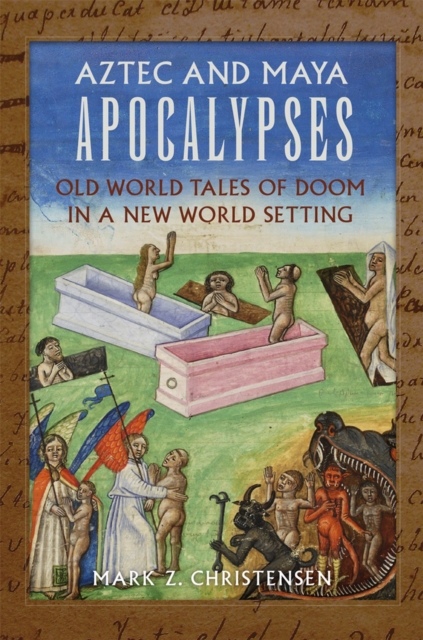Aztec and Maya Apocalypses: Old World Tales of Doom in a New World Setting

Aztec and Maya Apocalypses: Old World Tales of Doom in a New World Setting
The Second Coming of Christ, the resurrection of the dead, the Final Judgment: the Apocalypse is central to Christianity and has evolved throughout Christianity's long history. Thus, when ecclesiastics brought the Apocalypse to Indigenous audiences in the Americas, both groups adapted it further, reflecting new political and social circumstances. The religious texts in Aztec and Maya Apocalypses, many translated for the first time, provide an intriguing picture of this process--revealing the influence of European, Aztec, and Maya worldviews on portrayals of Doomsday by Spanish priests and Indigenous authors alike. The Apocalypse and Christian eschatology played an important role in the conversion of the Indigenous population and often appeared in the texts and sermons composed for their consumption. Through these writings from the sixteenth to the early nineteenth century--priests' "official" texts and Indigenous authors' rendering of them--Mark Z. Christensen traces Maya and Nahua influences, both stylistic and substantive, while documenting how extensively Old World content and meaning were absorbed into Indigenous texts. Visions of world endings and beginnings were not new to the Indigenous cultures of America. Christensen shows how and why certain formulations, such as the Fifteen Signs of Doomsday, found receptive audiences among the Maya and the Aztec, with religious ramifications extending to the present day. These translated texts provide the opportunity to see firsthand the negotiations that ecclesiastics and Indigenous people engaged in when composing their eschatological treatises. With their insights into how various ecclesiastics, Nahuas, and Mayas preached, and even understood, Catholicism, they offer a uniquely detailed, deeply informed perspective on the process of forming colonial religion.
PRP: 341.00 Lei
Acesta este Prețul Recomandat de Producător. Prețul de vânzare al produsului este afișat mai jos.
272.80Lei
272.80Lei
341.00 LeiLivrare in 2-4 saptamani
Descrierea produsului
The Second Coming of Christ, the resurrection of the dead, the Final Judgment: the Apocalypse is central to Christianity and has evolved throughout Christianity's long history. Thus, when ecclesiastics brought the Apocalypse to Indigenous audiences in the Americas, both groups adapted it further, reflecting new political and social circumstances. The religious texts in Aztec and Maya Apocalypses, many translated for the first time, provide an intriguing picture of this process--revealing the influence of European, Aztec, and Maya worldviews on portrayals of Doomsday by Spanish priests and Indigenous authors alike. The Apocalypse and Christian eschatology played an important role in the conversion of the Indigenous population and often appeared in the texts and sermons composed for their consumption. Through these writings from the sixteenth to the early nineteenth century--priests' "official" texts and Indigenous authors' rendering of them--Mark Z. Christensen traces Maya and Nahua influences, both stylistic and substantive, while documenting how extensively Old World content and meaning were absorbed into Indigenous texts. Visions of world endings and beginnings were not new to the Indigenous cultures of America. Christensen shows how and why certain formulations, such as the Fifteen Signs of Doomsday, found receptive audiences among the Maya and the Aztec, with religious ramifications extending to the present day. These translated texts provide the opportunity to see firsthand the negotiations that ecclesiastics and Indigenous people engaged in when composing their eschatological treatises. With their insights into how various ecclesiastics, Nahuas, and Mayas preached, and even understood, Catholicism, they offer a uniquely detailed, deeply informed perspective on the process of forming colonial religion.
Detaliile produsului









